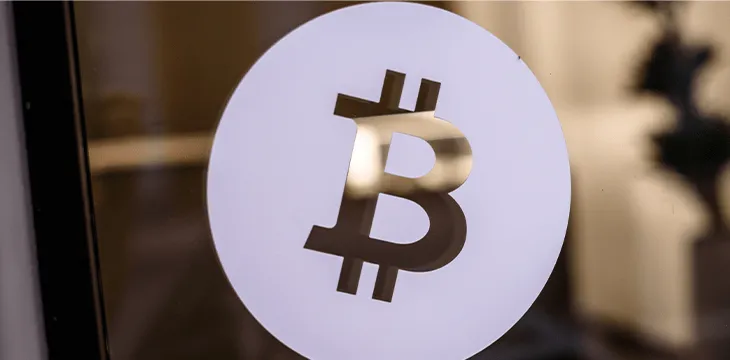|
Getting your Trinity Audio player ready...
|
A new system for BTC called CoinPool promotes itself as a way to increase “coin onboarding and transactional scaling by orders of magnitude.” In reality, it’s yet another bolt-on “fix” that takes transactions off the blockchain, placing them in a pool that hides their details from public records and increasing user risk.
In other words, it’s another solution for BTC’s self-imposed scaling woes by creating an external system that links to BTC but isn’t actually part of BTC. A fundamental Bitcoin feature is that its transaction record is public and verifiable, even if explicit user identification isn’t part of those records. Remove this, and problems start to appear both for network security and legal compliance.
New Bitcoin scaling whitepaper just dropped: "CoinPool: efficient off-chain payment pools for Bitcoin"https://t.co/8saORsE3wg
— Jameson Lopp (@lopp) February 21, 2022
What is CoinPool?
CoinPool, according to its white paper, is a “covenant-based payment pool construction.” It “allows many users to share a UTXO and make instant off-chain transfers inside the UTXO while allowing withdrawals at any time without permission from other users.” UTXO refers to “unspent transaction outputs,” a key component of the Bitcoin transaction database that determines who is allowed to spend what amount of Bitcoin.
It addresses some of the shortcomings for the Lightning Network, such as liquidity depletion over time in payment channels, the on-chain resources consumed by opening and closing payment channels, and multi-hop trust-minimized routing causing channels to be closed more often.
CoinPool approaches the problem by creating transaction pools rather than Lightning’s payment channels. It allows users to “share UTXO ownership” by maintaining an on-chain UTXO and a set of pre-signed transactions. Transfers (i.e., payments) between pool members involve replacing these pre-signed transactions with new ones, which all pool participants would approve. Although a participant can withdraw from the pool unilaterally at any time, there are checks to ensure they can’t withdraw more than they own.
CoinPool groups can transact freely within the group, run additional protocols like payment channels, or even connect to other CoinPools and the Lightning Network—while leaving only a minimal record of their actions on the blockchain.
The paper suggests CoinPool would have applications for trading pools, commodity contracts, and “smart corporations” (a.k.a. DAOs). While it may do these things for members of these pools, in reality, it does nothing to improve BTC’s actual scaling situation that would make it more feasible for everyday users.
BTC is regularly touted as a non-establishment potential replacement for the global financial system or an alternative to state backed currencies like the U.S. dollar, or Euro should either suffer a crisis. Realistically, it’s unable to do that due to its 1-4MB block size (and 4-7 transaction per second) limit, which causes congestion and high transaction fees. That situation remains the same unless external, non-Bitcoin networks are created to handle the load instead of the blockchain itself.
If CoinPool’s UTXO-sharing method sounds slightly familiar, it’s because it has similarities with “coin mixers.” Coin mixers also pool transactions in a way that hides their details from on-chain records, hopefully returning the funds to their users with no blockchain record of where they’ve been.
As well as being insecure and unreliable, coin mixers are considered illegal operations by many authorities around the world. Many of their users are money-launderers and other criminals looking to obfuscate records of their actions.
So this isn’t a commentary on the moral rights and wrongs of transaction tracing or fund seizures—of which there are many. Instead, it’s pointing out that if a system exists to deliberately obscure transaction details, regulators will take a dim view of it, which presents risks to users. Any users placing their funds in such a system runs the risk that all funds involved may be seized at some point, regardless of what those funds were intended for.
For those who suggest governments themselves act in criminal ways, remember that “follow the money” works for everyone. It may help law enforcement track criminals, but it also helps investigate and expose instances of government corruption. If criminals can hide their financial dealings, so can those involved with governments.
Not actually a ‘scaling solution’
The CoinPool white paper also states: “While Bitcoin has established itself as a store of value, it is yet to be explored whether it can enable high transaction throughput without sacrificing security.”
We could debate whether any digital asset has established itself as a store of value. However, Bitcoin has already proven it can allow massive transaction throughput in a secure way for several years now. That’s because BTC is not Bitcoin. Only BSV represents Bitcoin in terms of its original protocol rules and functionality.
While on-chain scaling has been possible in Bitcoin since it was first launched, BSV removed artificial limits that were placed on transaction block sizes since 2009. The BSV network processed over 2.38 million transactions just yesterday, at an average of 27.6 on-chain transactions per second (though it’s capable of far more). For comparison, BTC is stuck at a maximum of seven on-chain transactions per second (in reality, more like 4) across the entire network.
Bitcoin (as BSV) already scales unboundedly on the blockchain. It also does this without “sacrificing security” and has demonstrated this ability for over two years. Those promoting the oft-modified BTC as “Bitcoin” thanks to its familiar exchange ticker symbol are forever scrambling for new ways to make it actually work as money. However, Bitcoin has always been capable of being the world’s money without these add-ons. The only difference new external networks make to “scaling” is to take transactions off the BTC blockchain. This makes BTC less transparent, increases regulatory opposition, and exposes users to additional risk.
Follow CoinGeek’s Crypto Crime Cartel series, which delves into the stream of groups—a from BitMEX to Binance, Bitcoin.com, Blockstream, ShapeShift, Coinbase, Ripple,
Ethereum, FTX and Tether—who have co-opted the digital asset revolution and turned the industry into a minefield for naïve (and even experienced) players in the market.

 08-09-2025
08-09-2025 





